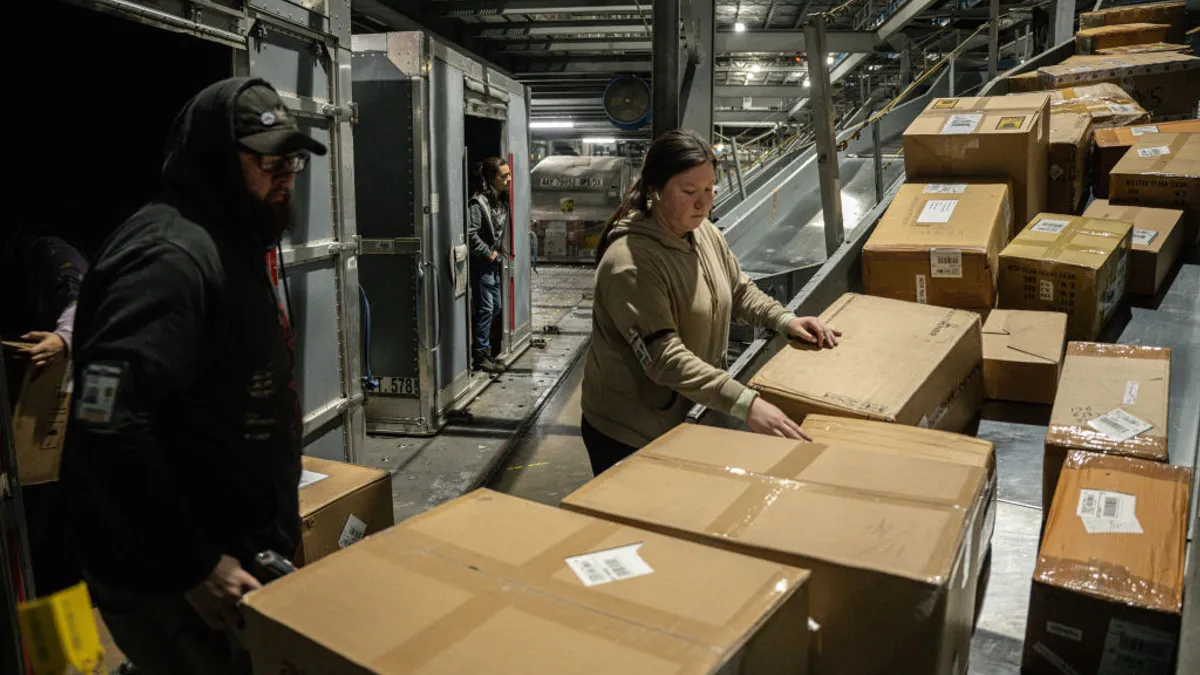UPS aims to close around 200 U.S. facilities as it shifts more volume into a growing number of automated package hubs, a top executive said during the logistics giant's investor and analyst conference Tuesday.
The company is consolidating locations as part of its "Network of the Future" initiative, which aims to reduce UPS’ reliance on manual labor in its package sortation operations and save $3 billion by the end of 2028, said Nando Cesarone, EVP and President U.S.
Additionally, UPS is closing 40 sorts this year — up from 30 in 2023 — and seeks to automate other aspects of its operations, such as dispatching for package cars and feeder trucks moving volume in its network.
"Network of the Future is targeting all activities for automation within our four walls," Cesarone said. "These building consolidations and automations yield real savings. For example, we'll have fewer feeder runs. We'll be able to eliminate both a.m. and p.m. ground and air feeds in many, many locations."
Examples of UPS' cost-saving efforts, according to an investor presentation, include consolidating four facilities in Massachusetts, Connecticut and Rhode Island into nearby hubs. The company also plans to shutter its Chalk Hill facility in Texas and its New York Capital Village Center hub while modernizing nearby facilities to help handle volume growth.
Facility consolidation will lower UPS' cost to serve customers while improving its volume-per-resource ratio, Cesarone said. That ratio is calculated as the average daily volume divided by U.S. employees. The ratio was 51 in 2023, and UPS wants it to increase to about 59 in 2026.
At the same time, UPS will invest in 63 automation projects throughout the country to support projected volume growth in a less labor-intensive manner. The logistics giant aims to more than triple the number of automated buildings in its network by the end of 2028, growing to 400 facilities, Cesarone said. The large majority of automation projects will be completed in existing buildings, while 10 will come from newly built locations.
Automation currently being deployed in the company's network includes robotic systems to help unload trailers and pick-and-place technologies that automate package movement onto conveyor belts.
"Our focus is to look at end-to-end automation within the facility," said Bala Subramanian, UPS chief digital and technology officer, during the presentation.
UPS is trimming costs and modernizing its network amid a softer demand environment for package delivery services compared to the heights of the COVID-19 pandemic. The company has already confirmed 11 sortation shift closures to Supply Chain Dive this year as it continues to adjust to volume declines.
Rival FedEx is overhauling its network for savings as well, consolidating overlapping routes and facilities as it combines the operations of its separate Ground and Express units.















